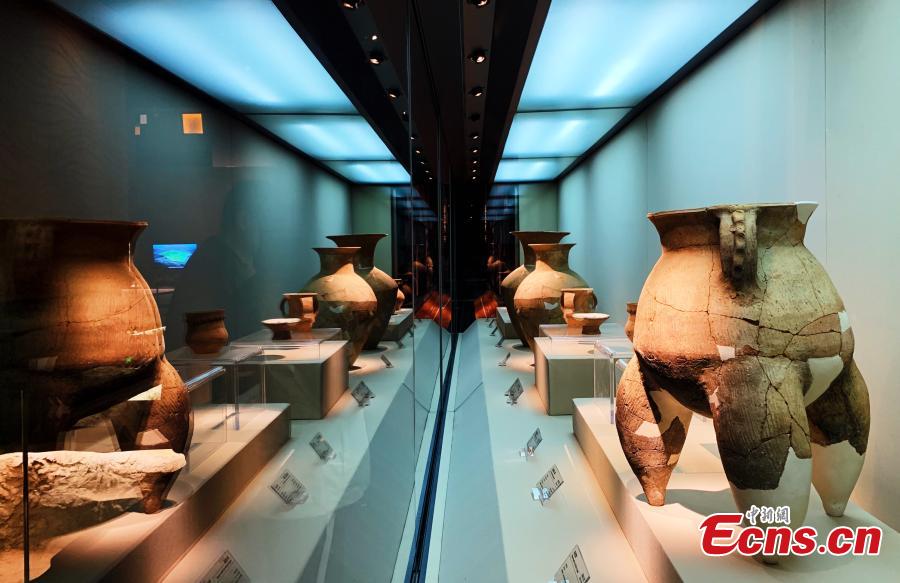
Pottery pots are on display at the Lajia Ruins Museum, Minhe County, northwest China's Qinghai, Oct. 17. Lajia Ruins, dubbed "Pompeii of China," was formed by an earthquake and flood dating back 4,000 years. The Lajia site is the largest disaster excavation site found in China so far. (Photo: China News Service/ Ma Mingyan)
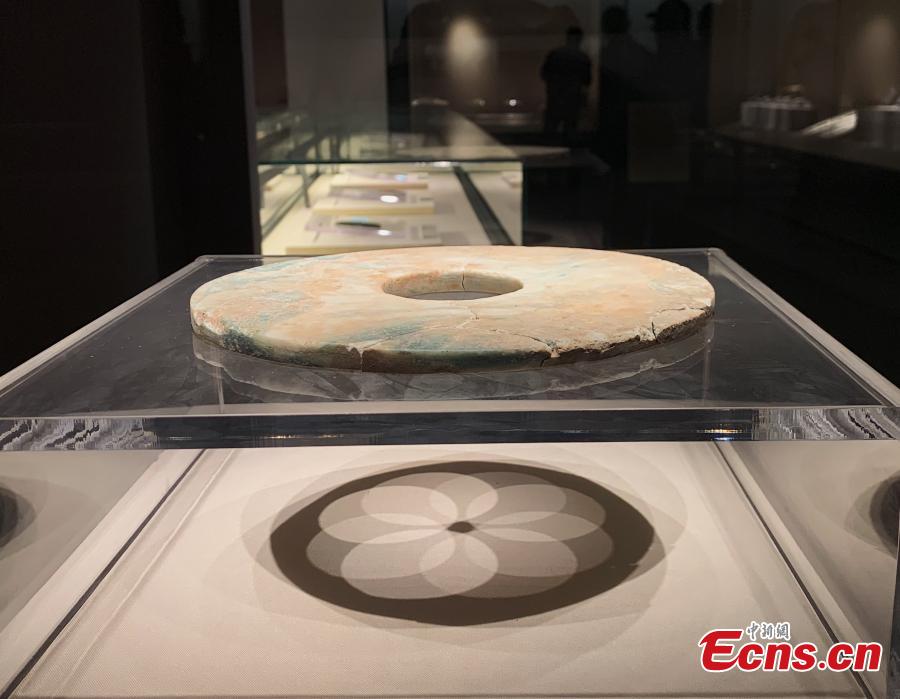
A jade disc is on display at the Lajia Ruins Museum, Minhe County, northwest China's Qinghai. Lajia Ruins, dubbed "Pompeii of China," was formed by an earthquake and flood dating back 4,000 years. The Lajia site is the largest disaster excavation site found in China so far. (Photo: China News Service/ Ma Mingyan)

Photo taken on Oct. 17 shows a piece of raw jade at the Lajia Ruins Museum, Minhe County, northwest China's Qinghai. Lajia Ruins, dubbed "Pompeii of China," was formed by an earthquake and flood dating back 4,000 years. The Lajia site is the largest disaster excavation site found in China so far. (Photo: China News Service/ Ma Mingyan)
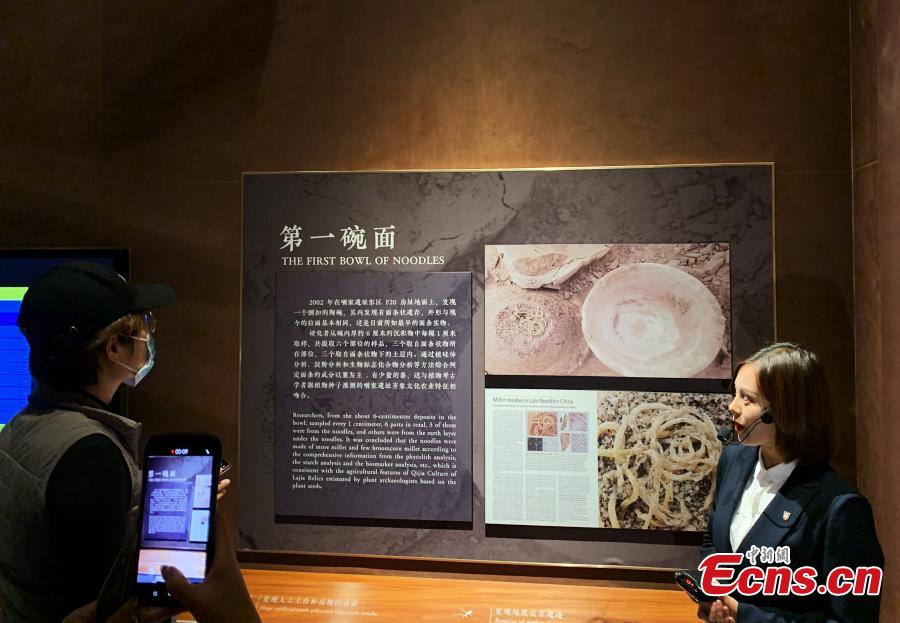
A guide introduces the world's oldest noodles to visitors on Oct. 17 at the Lajia Ruins Museum, Minhe County, northwest China's Qinghai. Lajia Ruins, dubbed "Pompeii of China," was formed by an earthquake and flood dating back 4,000 years. The Lajia site is the largest disaster excavation site found in China so far. (Photo: China News Service/ Ma Mingyan)

Visitors take photos of the exhibits at the Lajia Ruins Museum, Minhe County, northwest China's Qinghaij, Oct. 17, 2021. Lajia Ruins, dubbed "Pompeii of China," was formed by an earthquake and flood dating back 4,000 years. The Lajia site is the largest disaster excavation site found in China so far. (Photo: China News Service/ Ma Mingyan)
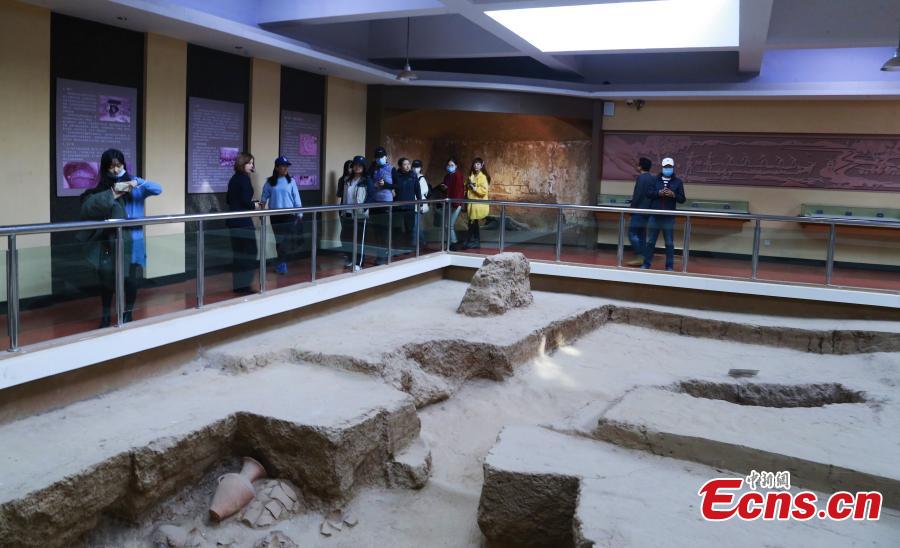
People visit the Lajia Ruins Museum, Minhe County, northwest China's Qinghai on Oct. 17. Lajia Ruins, dubbed "Pompeii of China," was formed by an earthquake and flood dating back 4,000 years. The Lajia site is the largest disaster excavation site found in China so far. (Photo: China News Service/ Ma Mingyan)











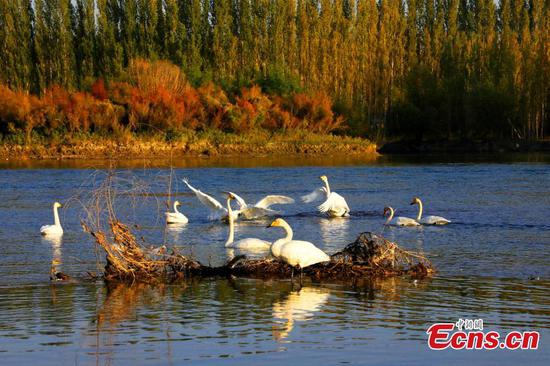




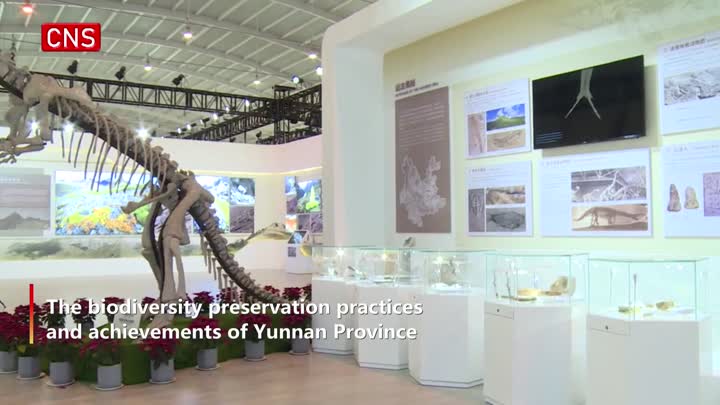






 京公网安备 11010202009201号
京公网安备 11010202009201号